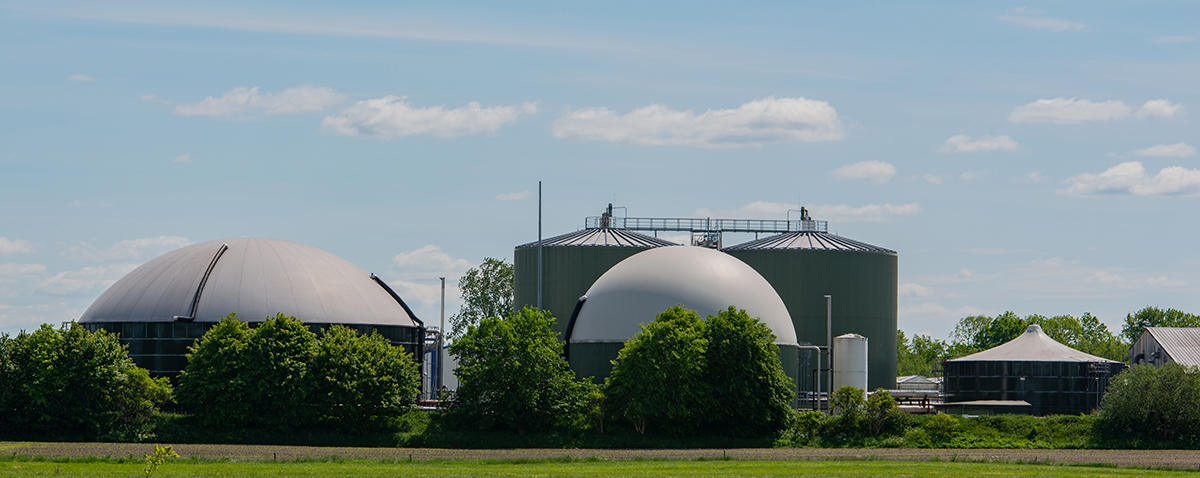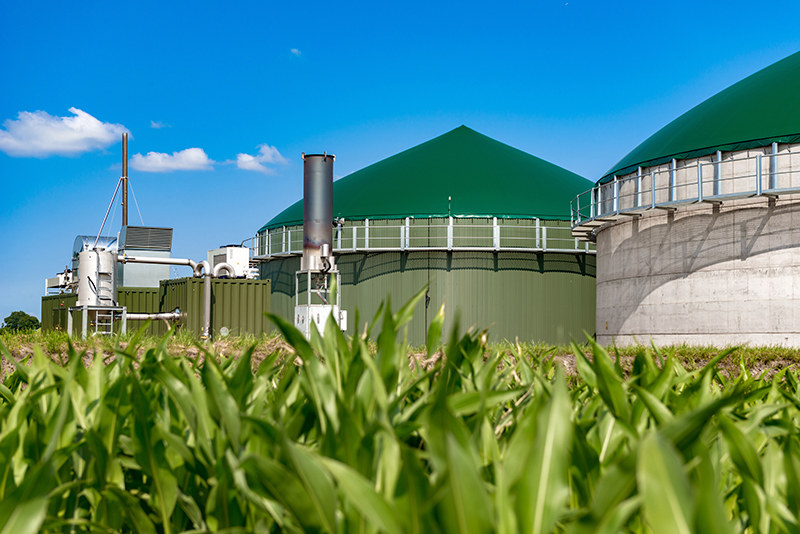Bioenergy

Published: Friday, 09 June 2023
As we continue to look through the types of renewable energy that will be our leading energy generation, we are going to be looking at bioenergy. Currently the largest source of renewable energy globally at 55%, and over 6% of our global energy supply, The Net Zero Emissions could see bioenergy displace fossil fuels by 2030. In this article, we will be looking at what bioenergy is, how it works, and the advantages and disadvantages that comes with it.
What is bioenergy?
One of the most diverse resources to help meet the demand of our energy needs, bioenergy comes from recently living organic material to produce, fuels, heat, and electricity. The most common biomass used for energy include wood, food crops (corn) energy crops and waste from forest, yards, or farms. Small scale, we have been using bioenergy since we first started using wood to heat our homes. Now, we use this type of energy to heat homes at a global scale.
How it works
With how bioenergy is created there is a variety of ways we can generate the power from biomass. Regarding plants and wood, the biomass energy is stored through the process of photosynthesis which will convert the radiant energy into chemical energy, we then extract this energy through burning the waste product to generate bioenergy. The four processes we use to covert the energy is:
Direct combustion (burning) to produce heat.
The most common of bioenergy processes is direct combustion. The biomass is burned directly to heat buildings and water but can also be used in an industrial standpoint to generate electricity in steam turbines.
Thermochemical conversion produces solid, gaseous, and liquid fuels.
A thermochemical conversion of biomass includes pyrolysis and gasification. Both are thermal decomposition processes which the biomass feedstock is heated in a closed, pressurized vessel called gasifiers at very high temperatures. The main difference between this and direct combustion is how much oxygen is present during the conversion process.
Pyrolysis – Heating materials at temperatures of 400-500°C with almost the complete absence of oxygen. This method produces fuels like charcoal, bio-oil, renewable diesel, methane, and hydrogen.
Hydrotreating – used to process bio-oil with hydrogen under elevated temperatures and increased pressure to produce renewable diesel, gasoline, and jet fuel.
Gasification – This process heats organic materials (800-900°C) with injections of controlled amounts of oxygen/steam to produce carbon monoxide and hydrogen rich gas called synthesis gas (syngas.) Syngas is used for diesel engines, heating and generating electricity in gas turbines.
A chemical conversion to produce liquid fuels.
Also known as transesterification, chemical conversion is used to convert vegetable oils, animal fats, and greases in fatty acid methyl esters (FAME), this is used to produce biodiesel.
Biological conversion which produces liquid and gaseous fuels
Biological conversion involves fermentation to convert biomass into ethanol and anaerobic digestion to produce renewable natural gas. The renewable gas that is created, if properly treated and made correctly, then it has the same use as fossil fuels.

Advantages
As our currently leading source of renewable energy, comes with it a set of advantages that industry specialists believe could be the reason why it is becoming our leading renewable energy.
Abundant
Not only is biomass energy renewable, but there is also an abundance of it for us to use. We produce a lot of organic matter every day and it is readily available everywhere on the planet. However, although we do have an abundance of it doesn’t mean we can overuse it. Unless bioenergy is properly managed, we could see ourselves overusing and depleting our organic material.
Waste Reduction
A lot of the planet produces a lot of biodegradable waste. Food and plant waste instead of it becoming garbage and being thrown in landfill, we can actually use this to make energy like electricity. This is great for the environment because it is taking produce that would usually be thrown into landfill and actually giving it a purpose that we will be able to use for years to come.
Many uses
Another great thing about biomass is that it can be used in many forms. Depending on the organic matter that that we burn and the systems we use, will generate different types of power. These can be products such as biofuels and methane gas, to more traditional power to directly heat or generate electricity for your home.
Disadvantages
Though renewable energy offers a positive and sustainable way to get our energy, Bioenergy has a variety issue with it that could with improper management could cause as many issues as the use of fossil fuels.
Deforestation
Although bioenergy is a renewable source of energy, it does not mean we can use it in an unsustainable way. Incorrect biomass usage can lead to deforestation. With wood being one of the main sources for biomass energy, to produce the amount of power needed for our homes would require a significant amount of wood to be used which can lead to the destruction of plant life, animal homes, and it can also lead to drought. Currently, Governments are looking to reduce the overall use of bioenergy to help mitigate this issue.
Inefficient
Currently, biomass energy doesn’t come close to fossil fuels with how efficient it is. For biofuel, it will be fortified with fossil fuels to actually help make it more efficient. Bioenergy still has a long way to go, and the technology will need to advance before it can be used at a much larger scale.
Space
Like many renewable energy plants, they require lots of space. Most plants will usually be built either near the source of biomass or where they can grow the organic matter themselves. By doing this instead of using agricultural waste negatively affects our land footprint per unit of electricity production.
Bioenergy is currently the globes largest source of renewable energy; however, it still has a long way to go before it can move ahead of fossil fuels as our main energy source.
Making sure we keep improving our renewable energy technologies will help to mitigate the issues we currently face with bioenergy and will lead us in the right direction for the future.
Check out our previous article looking at types of renewable energy and for more in-depth articles on these energy sources, please find them here.

